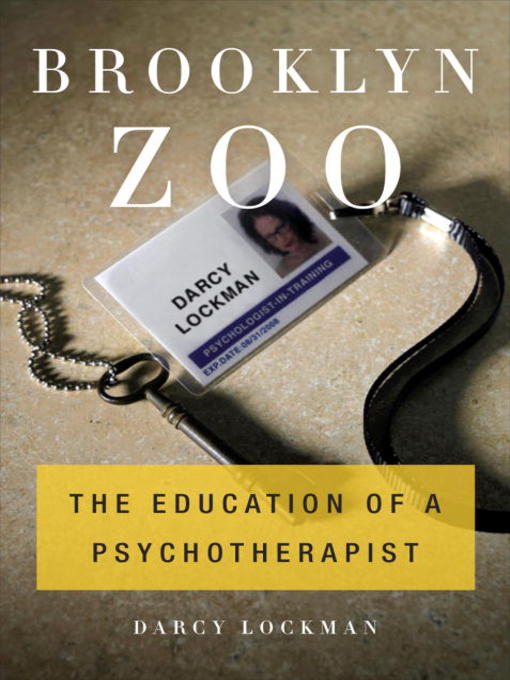
Brooklyn Zoo
The Education of a Psychotherapist
آموزش روان درمانگرsteT
کتاب های مرتبط
- اطلاعات
- نقد و بررسی
- دیدگاه کاربران
نقد و بررسی

April 9, 2012
Clinical psychologist and journalist Lockman writes about her intern year at Brooklyn’s Kings County Hospital, detailing her rotations in forensic psychology, the psych. emergency room, an inpatient unit, and as a “consultation liaison” with medical staff. She captures the hopeless dreariness of the place—the inpatient unit is “a large stale-smelling place with... cold white concrete floors and rusty-paned windows that did not open.” Above all, Lockman illustrates how difficult it is to engage patients with serious psychiatric illnesses. She asks one patient about her sleep and appetite—possible signs of mental disorder—and the patient responds, “You’re a nosy one, aren’t you?” Lockman is candid about her frustrations (and all too occasional small triumphs) with patients, as well as with absent or burned-out supervisors. She says that psychological insights were often trumped by psychiatry’s biomedical model. Although crisply written, there are too many brief interactions with too many patients, perhaps reflecting the nature of the work. Exemplified by a reference to “my masochistic defenses,” she sometimes alludes to her own psychological dynamics without adequately explaining her personal interactions. Still, this is a useful, sometimes memorable, look at the vagaries of a psychologist’s training and role in an overwhelming institutional setting. Agent: Dan Conaway, Writers House.

June 1, 2012
The challenges facing a psychotherapist during a yearlong internship in a New York City public hospital. Based on her own positive experience in psychoanalysis, Lockman pursued an education in the psychoanalytic tradition, which included supervised therapy with clients, one of whom she saw over a three-year period. She explains that this put her at odds with the mainstream of the profession today because of "the pernicious hostility toward the psychoanalytical way of working," which often dismisses psychological problems as "nothing more than chemical occurrences in the brain." She chronicles her initial frustration with her inability to put her education and skills to good use and her dawning understanding that the chaotic conditions at the hospital often made her skills irrelevant anyway. Her patients constantly struggled with the brutal conditions of inner-city life, job loss, random violence and more. The author eventually realized that the most important gift she could give them was her willingness to listen to their concerns and treat them with respect, while evaluating whether they should be released or sent to long-term care. Her internship included forensics (the determination of whether a prisoner was mentally fit to stand trial), different stages in the intake procedure, and consultations with doctors treating medical patients who seemed disturbed. Lockman remains convinced that along with the socioeconomic problems that place limitations on the treatment offered to mental patients in public hospitals, the medicalization of mental illness is also at fault. Before returning to graduate school Lockman worked as a magazine journalist, a skill she puts to good use in this insider's look at the practice of psychiatry in a poorly funded, understaffed public institution.
COPYRIGHT(2012) Kirkus Reviews, ALL RIGHTS RESERVED.

March 15, 2012
In 2007, psychologist and freelance magazine writer Lockman began her yearlong internship at Kings County Hospital in Brooklyn, barely a month after the New York Post broke a story about the hospital's "Dickensian" conditions. In this debut memoir about her training there, she marvels at the counterintuitive practices in place in the G Building, Kings's inpatient adult psychiatric center, where a lack of supervision, resources, and even working elevator call buttons are a matter of course. Readers follow Lockman's rotations through inpatient, psych ER, forensic psychology, and consultation-liaison psychiatry. Though lively details do emerge--a female patient, hiding in a restroom garbage pail, terrifies a male patient who sees "her intense little eyes peering over the top"--Lockman's tone is grudging. She's more animated when railing against the hospital's "strong ambivalence about psychology," psychoanalysis in particular, than its "culture of offhand neglect." VERDICT Neither a moving personal history nor a crusading insider's look into a broken system, Lockman's book lacks that certain storyteller's spark. In the end, her patients spin better tales.--Molly McArdle, Library Journal
Copyright 2012 Library Journal, LLC Used with permission.

























دیدگاه کاربران